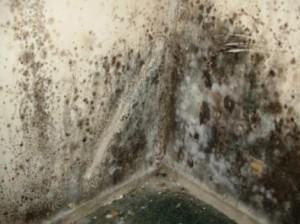Category
- Concrete Best Practices
Maintaining a dry basement adds not only to the durability of your home, but mitigates health issues caused by mold, and reduces the need for costly repairs. Even basements which have minor water damage or persistent moisture issues can create an un-inviting space which can reduce the versatility of your home.
Regular inspections of your basement walls are important in detecting a leaky basement quickly – and preventing the problem from turning into a major one.
Here are five common signs of water infiltration into your basement:

Mold is Mother Nature’s warning that something has spoiled. It can grow anywhere where is too much moisture and not enough air exchange. Molds produce allergens, irritants, and in some cases, toxins. People can experience a variety of health problems, such as headaches, breathing difficulties, skin irritation, allergic reactions, and aggravation of asthma symptoms.
The most common cause of mold in basements is flooding, which can promote the growth of dangerous molds such as toxic black mold.
Mold can range in colors of gray, green, black or white. The texture may also vary from having a fuzzy coating to appearing like a flat stain. Many molds may be detected by a distinct musty odor, however there are still some species which are odor-free. These species usually grow behind the wall, and in tight crevices, so a professional mold inspector is the best way to ensure your basement is free of mold.

Once concrete is poured, one thing is for certain – it will crack. Cracking naturally occurs due to shrinkage during the drying process, settlement as the soil holding the foundation shifts over time, and pressure induced stress, either from water or soil pressure from the outside of the structure.
If the foundation is waterproofed properly, these cracks will not promote leaks, as the water will not have an entry point into the basement. However, if there is staining around the cracks, or they are wider than a hairline, this could be a source of leakage.

In poured concrete foundations, the forms in which the concrete is poured are constructed with wood held together with steel rods. Once the concrete is poured, the steel rods and wood are removed, leaving a concrete wall with holes approximately 1.6 centimeters (5/8 inches)in diameter about every half meter (18 inches) or so, where the rods used to be.
These holes are patched, usually with a strong cementitious based product. If the tie holes are not patched properly, they can be a serious weak spot in the concrete wall, and create serious flooding or water damage. Staining, or softening of paint or drywall over the concrete wall, about 1.5 meters (five feet) from the floor, may be a sign of a leaking tie-hole.

“Honeycomb” is the term used to identify rough, pitted concrete surfaces resulting from incomplete filling of the concrete against the formwork. Often this is caused by using concrete that is too stiff, or by improper installation.
Honeycombing on the surface can be a sign of more serious damage within the concrete, and act as a crack would by allowing water penetration into the interior of the structure.

The presence of moisture staining which occur high on a basement wall can be caused by either roof runoff spillage or a surface runoff problem. In addition to applying a waterproofing treatment to the walls of the basement, identifying and fixing the source of the water infiltration problem is very important, and can be an easy preventative measure to prevent further damage.



